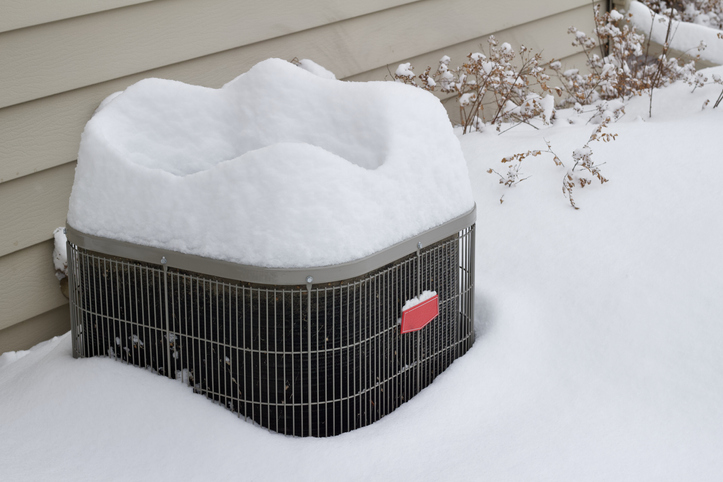November has been colder than usual, and it’s just going to get colder here in Chicagoland over the next several months. Cold weather has a knack for infiltrating into our surroundings, making our furnaces less efficient, our homes more prone to damage, and our bodies just plain cold. Here at Maertin Heating & Cooling, we know that a great deal of winterizing advice boils down to one simple mantra: Cover it up!
Your Windows
Newer windows tend to be very efficient with few drafts, but when you have older, drafty or single-pane windows, you might want to cover them up. You could cover up the drafts with caulking or weatherstripping. You could cover the whole window in shrink-fitting plastic which seals the window away from the room, blocking drafts and creating a thin pocket of insulating air. If you don’t like the look of all that plastic, you can also minimize heat loss by covering your windows with heavy drapes or shades.
Sneaky Gaps
When you’ve already covered the drafts around your doors and windows, you might investigate other sources of heat loss or cold infiltration. Cover up any gaps where cold air may be leaking in: fireplace chimneys that are not in use, recessed lighting, and unfinished areas behind cabinets. Utility cut-throughs with gaps can be filled with a sprayable expanding foam product. Install rubber gaskets behind the plates on your electrical wall outlets to cover up the open space between the outlet and the outlet cover.
But Not Everything
“Cover it up!” Is a useful shorthand for winterizing your home, but there are a few caveats to note. First, while covering drafts around windows and doors is important, it’s also important to maintain proper ventilation and air quality in your home. Cover it up, but don’t hermetically seal it up. Second, there are a few places around the home where covering it up just won’t do. Your garden hose and external faucets can’t just be covered up for winter. Disconnect your hoses, drain and dry them, then store them in your garage or basement. Now you can cover the faucets outside.
Don’t Cover Your Air Conditioner
Your air conditioner’s manufacturer recommends leaving your air conditioner uncovered during the winter. Tarps and plastic can create pools of moisture in and around the unit, causing rust. A covered air conditioner also makes a perfect home for critters like mice and other rodents. If your air conditioner is surrounded by trees, our techs recommend putting a piece of plywood on top of the unit, weighting it down with a brick or perhaps the weights from your patio umbrella.
Don’t turn the off the power to your air conditioning unit; leave that breaker on. Your unit contains a small heater that remains running at a temperature just high enough to prevent oil migration.
Outside window screens need a different winterizing process. While removing screens can be a hassle, studies show that screens block as much as 40% of the natural light hitting your windows that could help warm your home. Screens also trap ice, snow, and debris against the window and home, making both more susceptible to deterioration and damage.
Beyond these important exceptions, “Cover it up!” represents your best strategy for preparing your home for the coming winter. The U.S. Department of Energy can help you identify areas of heat loss in your home and how to minimize that as much as possible.
When you have questions about energy efficiency, Maertin Heating & Cooling can help! Just call us at 708-479-9350 or click here.



